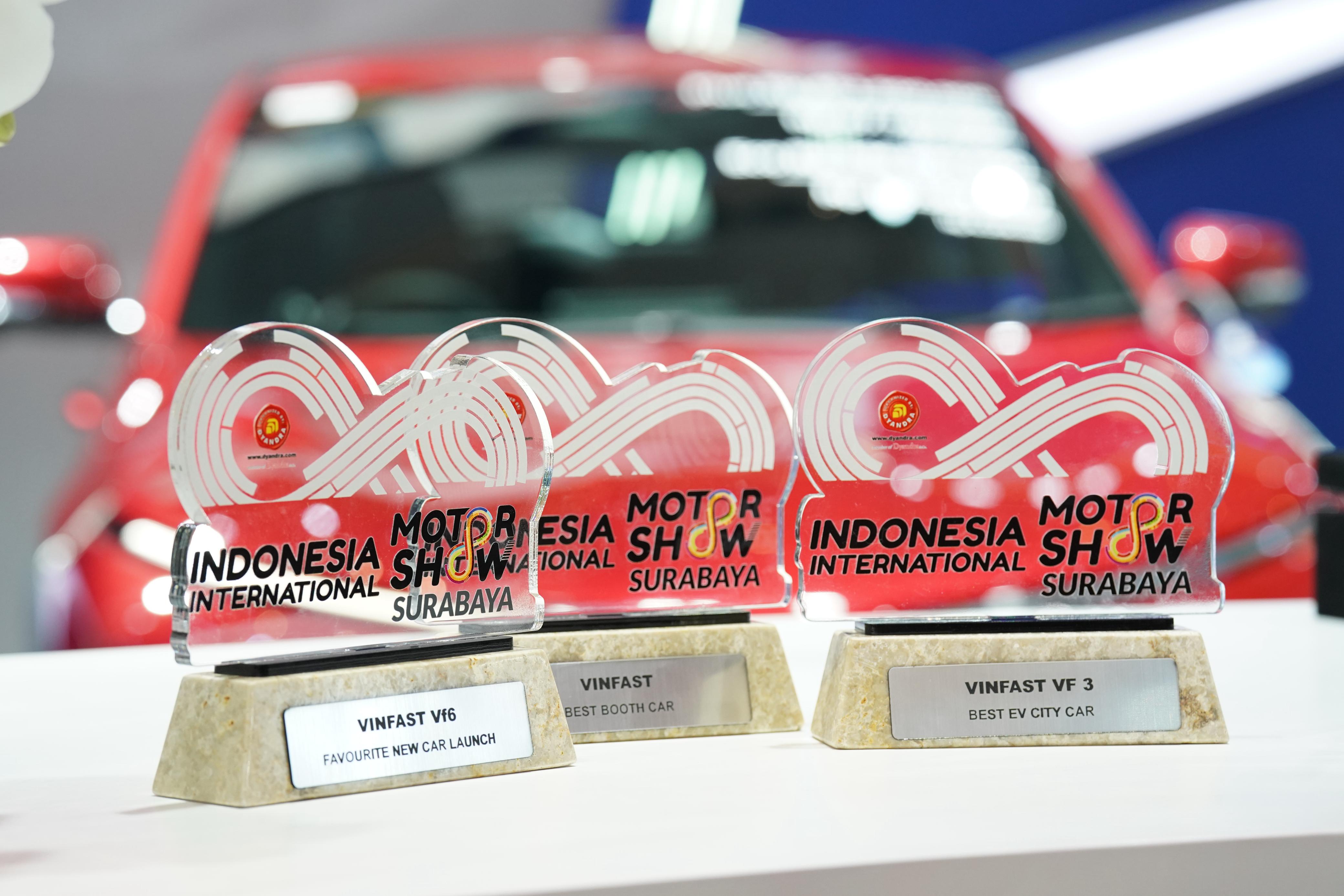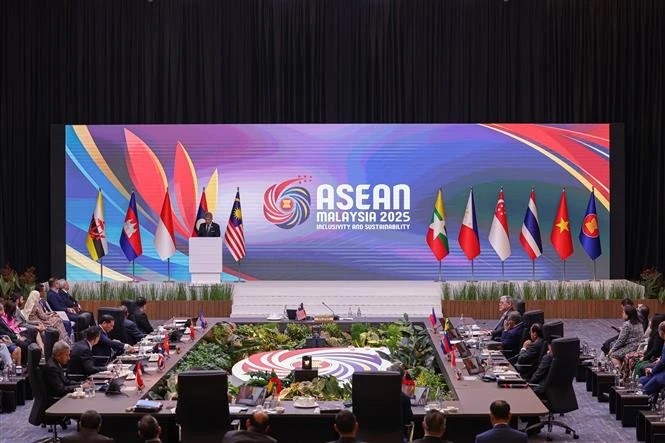Close Up Of The World’s First Hydrogen-Powered, Zero-Emission Vessel
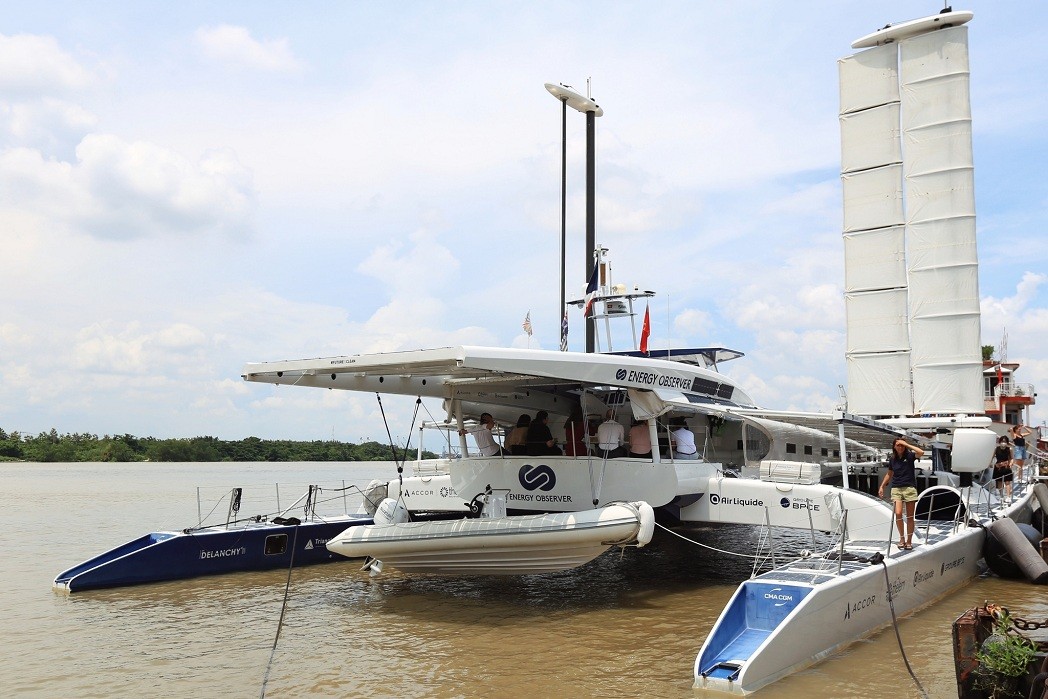 |
| The first boat to be powered solely by renewable energies and hydrogen conducts its journey in Southeast Asia as part of a world tour to raise awareness about clean energy. Source: Thanh Nien newspaper |
The world’s first hydrogen-powered, zero-emission vessel that is self-sufficient in energy – continues its journey in Southeast Asia, with the 73rd stopover of its round-the-world Odyssey being in Ho Chi Minh City, VNA reported.
Energy Observer arrived in Vietnam after navigation from Thailand. Energy Observer dropped anchor on the island of Phu Quoc, a UNESCO biosphere reserve also called the Emerald Island, due to the beauty of its natural resources.
Arriving in HCM City on June 22, the crew plans to present the ship's autonomous zero-emission system to several hundred visitors, decision-makers, students and school children in collaboration with the French Consulate in the city.
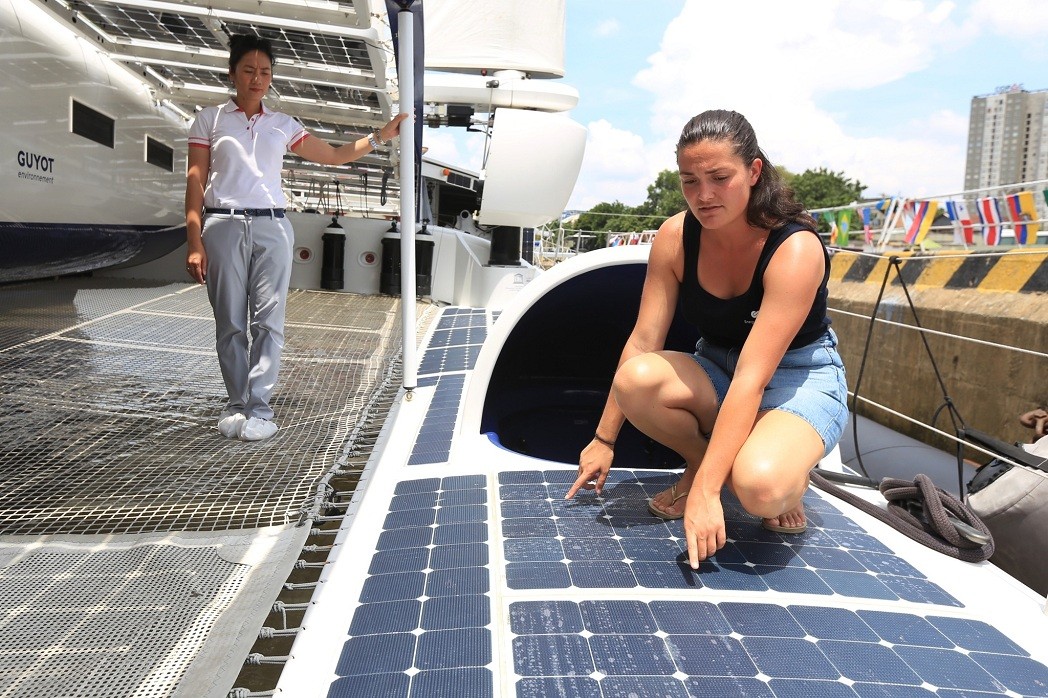 |
| The Energy Observatory is completely self-sustaining. It doesn’t use diesel, generates all the energy it needs on board and produces zero emissions. Source: Thanh Nien newspaper |
Setting sail from its port of registry of Saint Malo in 2017, Energy Observer has already covered over 50,000 nautical miles, made 72 stopovers, 16 of which have been with its travelling pedagogical village, and visited over 40 countries.
Born out of a legendary catamaran whose many accolades include being the fastest sailboat around the world with Sir Peter Blake, Energy Observer is a laboratory for ecological transition designed to push the envelope concerning zero-emission technologies.
From hydrogen to sun, wind, and tidal power, all solutions have been experimented with, tested, and optimised to make clean energies a practical reality accessible to all.
The vessel is covered with solar panels, has two tall wings for propulsion and is powered by sun, wind and hydro-kinetic energy. It creates its own hydrogen fuel from seawater as it sails along at speeds of up to 7 knots.
Salt and minerals are removed from the seawater before it is passed through an electrolyzer which splits the water into its elements: oxygen and hydrogen.
The oxygen is released but the hydrogen is compressed and stored in fuel cells or batteries that are located on either side of the Energy Observer.
Hydrogen power is used when wind or solar power can not be relied upon.
 |
| The vessel is covered with solar panels, has two tall wings for propulsion and is powered by sun, wind and hydro-kinetic energy. Source: Thanh Nien newspaper |
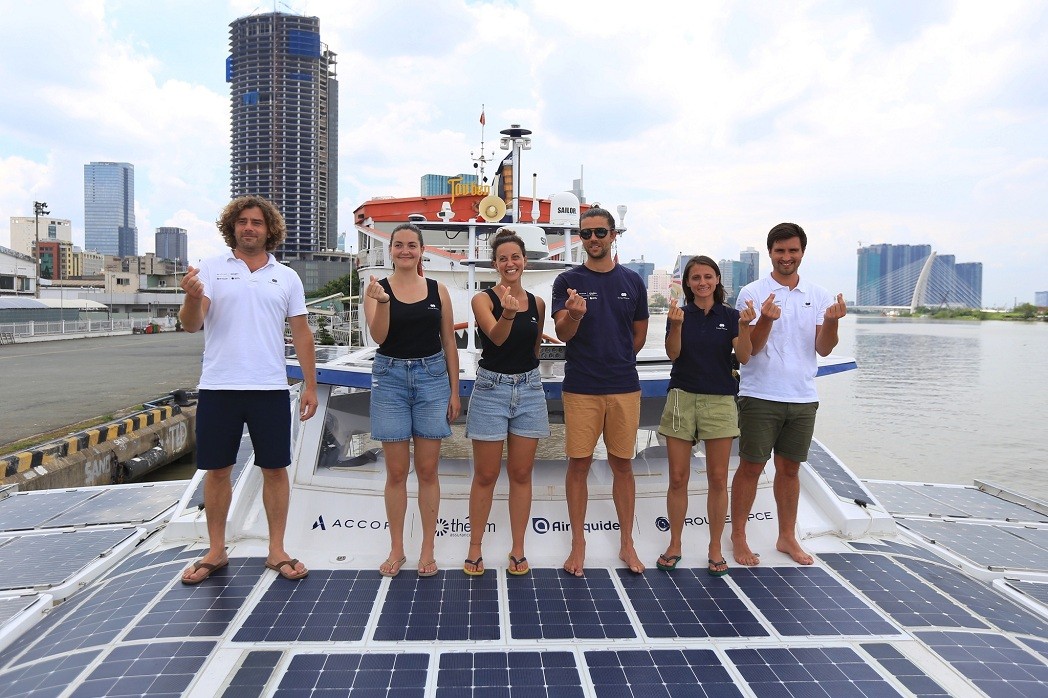 |
| The Energy Observatory is completely self-sustaining. It doesn’t use diesel, generates all the energy it needs on board and produces zero emissions. Source: Thanh Nien newspaper |
The main missions of the Energy Observer expedition consist of accelerating transition through innovation by demonstrating how well the onboard technologies and energy mix work in extreme environments and how they can be duplicated on a wider scale both on land and at sea.
Data gathered from voyage is being used in the research and development of hydrogen fuel cell technology for the maritime industry.
In its former life – before it was renovated with clean technology – the Energy Observer was originally named Formule Tag and was a champion racing sailboat. It was the first vessel of its kind to break the coveted 500 miles limit in 24 hours in 1984.
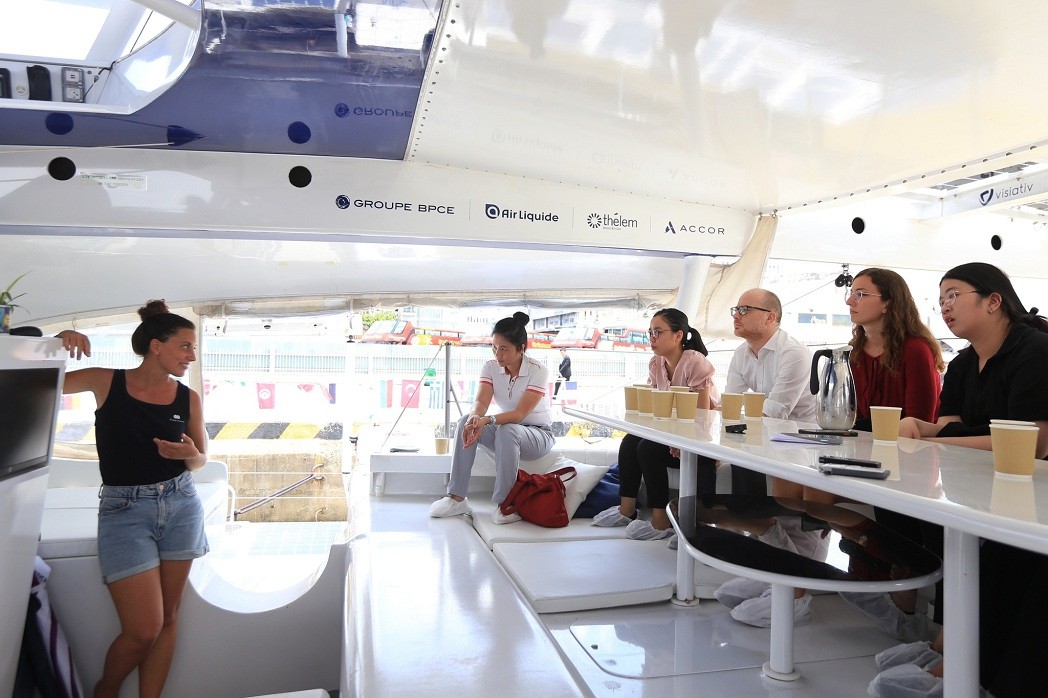 |
| The emphasis of its voyage is that shipping and the maritime industry need to be decarbonized as soon as possible, in order to limit its devastating impact on climate change. Source: Thanh Nien newspaper |
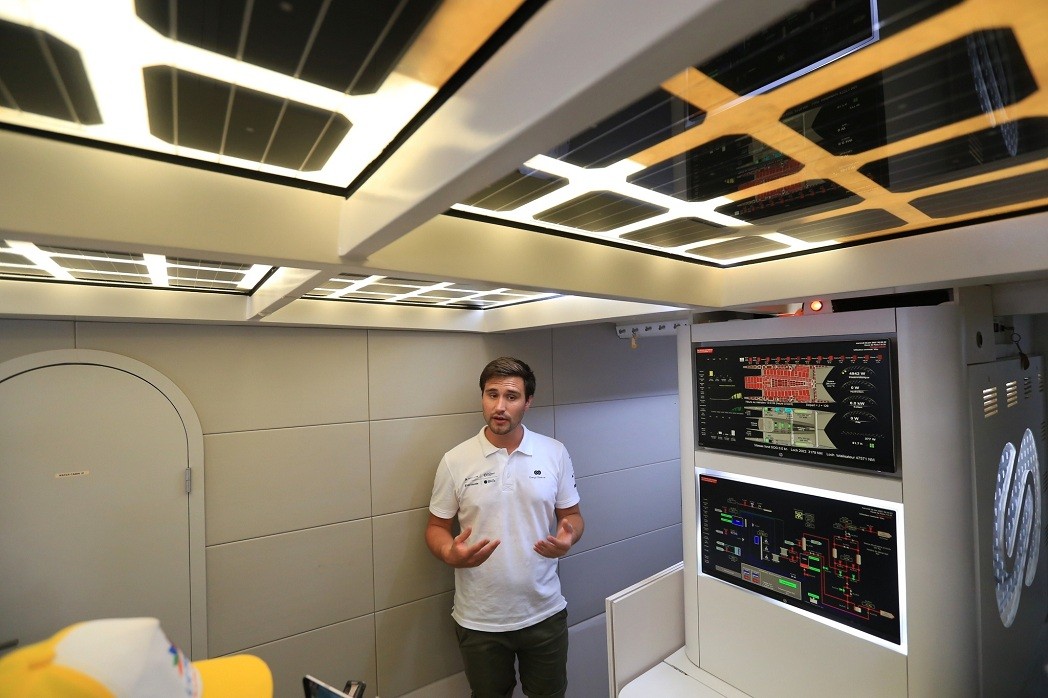 |
| Each cabin is of a good size and there is also a roomy seating and dining area, as well as a fully stocked kitchen complete with all mod-cons, including a dishwasher. Source: Thanh Nien newspaper |
In February 2021, the Vietnamese government released a draft of the country's national power development plan for 2021 to 2030. The plan expands current wind and solar capacity and prioritises enhancing grid infrastructure to ensure stable operation with a higher share of renewables.
Currently, more than half of the country's electricity generation comes from coal, and about 20% from hydroelectric generation. Other renewable sources account for 5% of Vietnam's electricity. This share of non-hydro renewables is expected to reach 25% by 2030, and up to 42% by 2045.
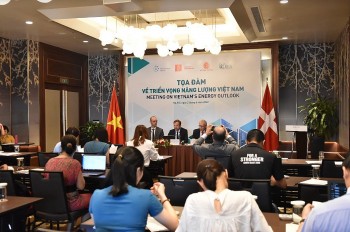 | New Vietnam Energy Outlook Report Shows the Way for Vietnam to Reach Net Zero Emissions in 2050 The Vietnam Energy Outlook Report, developed in close cooperation between the Danish Energy Agency (DEA), the Electricity and Renewable Energy Authority (Vietnam), and the Embassy ... |
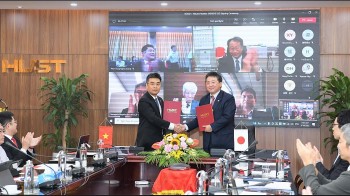 | JICA Helps Vietnam Realize Net Zero Emission Commitment The Japan International Cooperation Agency (JICA) and the Japan Science and Technology (JST) in cooperation with the Hanoi University of Science and Technology (HUST) and ... |
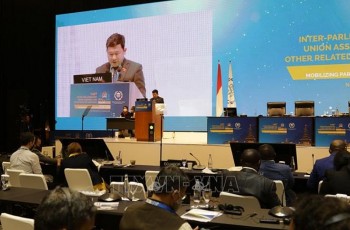 | Vietnam Presents Five Measures To Achieve Net-zero Targets At 144th IPU On March 22, at the plenary meeting of the 144th General Assembly of the Inter-Parliamentary Union (IPU-144), Vietnam proposed five measures to promote parliaments' actions ... |
Recommended
 Viet's Home
Viet's Home
Hue City to Raise Awareness on Mine Accident Prevention
 Focus
Focus
Vietnam Leaves Imprints on the World Peacekeeping Map
 Viet's Home
Viet's Home
“Global Vietnamese Singing 2025” - Connecting Hearts Longing for Homeland
 Viet's Home
Viet's Home
Vietnam’s People's Public Security Force Actively Contributes to UN Peacekeeping Operations
Popular article
 Viet's Home
Viet's Home
HAUFO Enhances Competence of People-to-People Diplomacy Personnel
 Viet's Home
Viet's Home
Hands that Reserve Da Long Brocade Craft
 Viet's Home
Viet's Home
Da Rsal – How Digital Transformation Reshape a Poor Commune
 Viet's Home
Viet's Home




